Bad translations killing your vibe? Folks hunt for the most accurate translator to save time, avoid mistakes, and skip pricey subscriptions, but free tools often fumble context, miss dialects, or mess up formatting. This guide spills the tea on 7 free translation tools, with AnyDoc’s free trial as the champ.
Top 7 Free and Most Accurate Translators
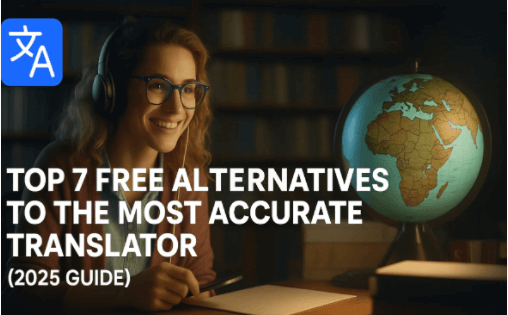
I’ve tested a bunch of free translation tools to find seven that rival the most accurate translator in 2025. Here’s the rundown, starting with AnyDoc’s free trial, followed by six other solid picks that aim to be the most accurate translator, with pros, cons, and my personal experience using each.
1. AnyDoc: The Free Translation Rockstar
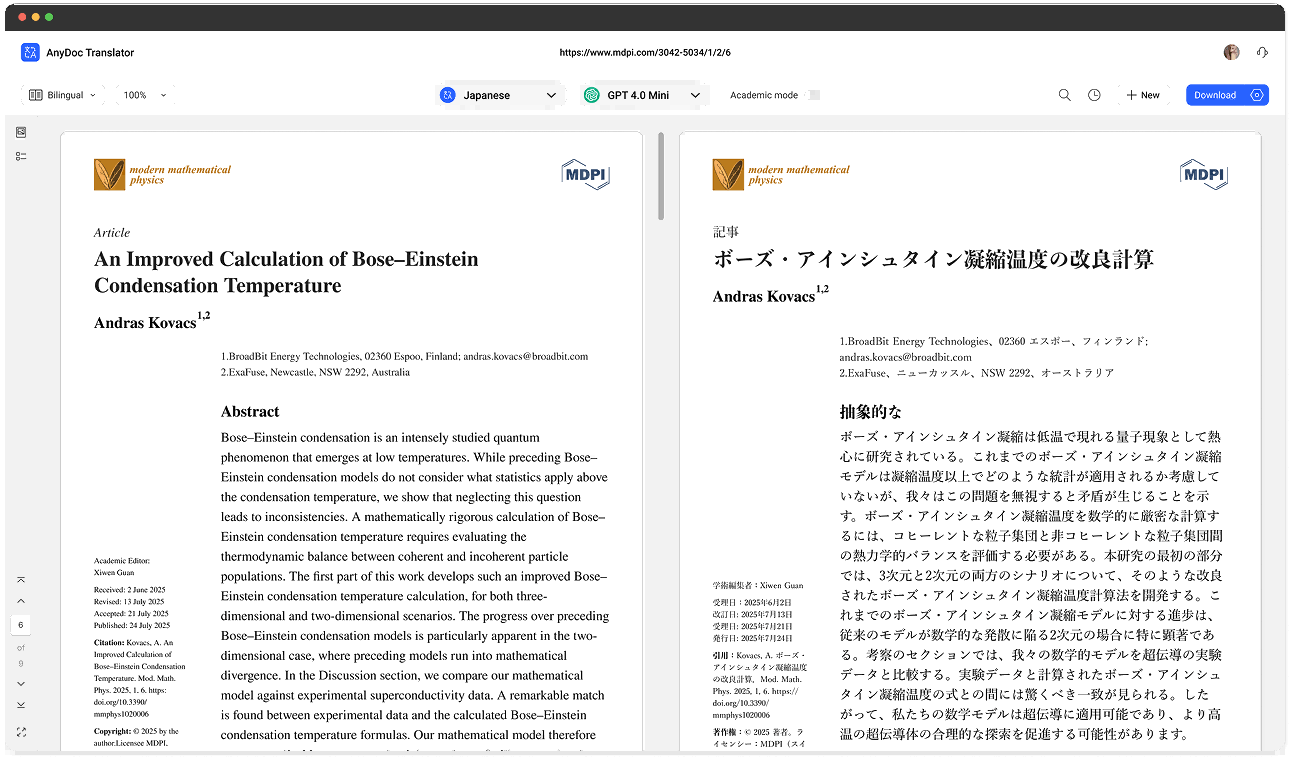
AnyDoc’s a translation tool that’s the most accurate translator, blowing others away with AI-driven accuracy in over 100 languages. Its free trial includes bilingual display, offline mode, and support for websites, documents, and subtitles, making it a versatile gem. It’s perfect for students, pros, or travelers needing flawless translations without the cost. I love how it handles everything from casual browsing to pro-level work.
Pros:
Crazy accurate: AI nails context, idioms, and cultural vibes.
Tons of languages: Covers 100+ languages, including dialects.
Seamless fit: Translates websites, docs, and subtitles.
Cons:
Limited free features: Batch processing needs a paid plan.
Learning curve: Takes a minute to master.
AnyDoc’s my go-to most accurate translator for everything, website browsing, document translation, even subtitles. It’s saved me when I needed flawless translations for work or travel without breaking the bank.
2. Google Translate: The Speedy All-Rounder
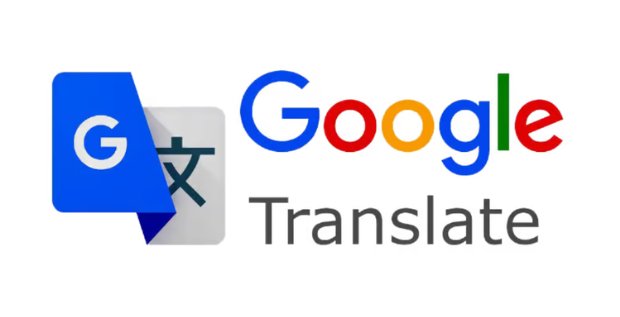
Google Translateis often seen as the most accurate translator for its speed and versatility, supporting 100+ languages with website, voice, and image translation. It’s a household name for quick checks, but it struggles with nuanced translations. I use it for casual stuff, but it’s not my pick for pro work. Still, it’s a solid free option for everyday needs.
Pros:
Fast and free: No cost, super quick.
Broad features: Website, voice, and image support.
Wide language support: Covers 100+ languages.
Cons:
Accuracy issues: Misses idioms and cultural nuances.
No offline for most: Limited offline support.
I use Google Translate as a most accurate translator for quick checks on my phone, but it’s not great for pro writing, it often sounds robotic.
3. DeepL Free: Nuanced and Natural
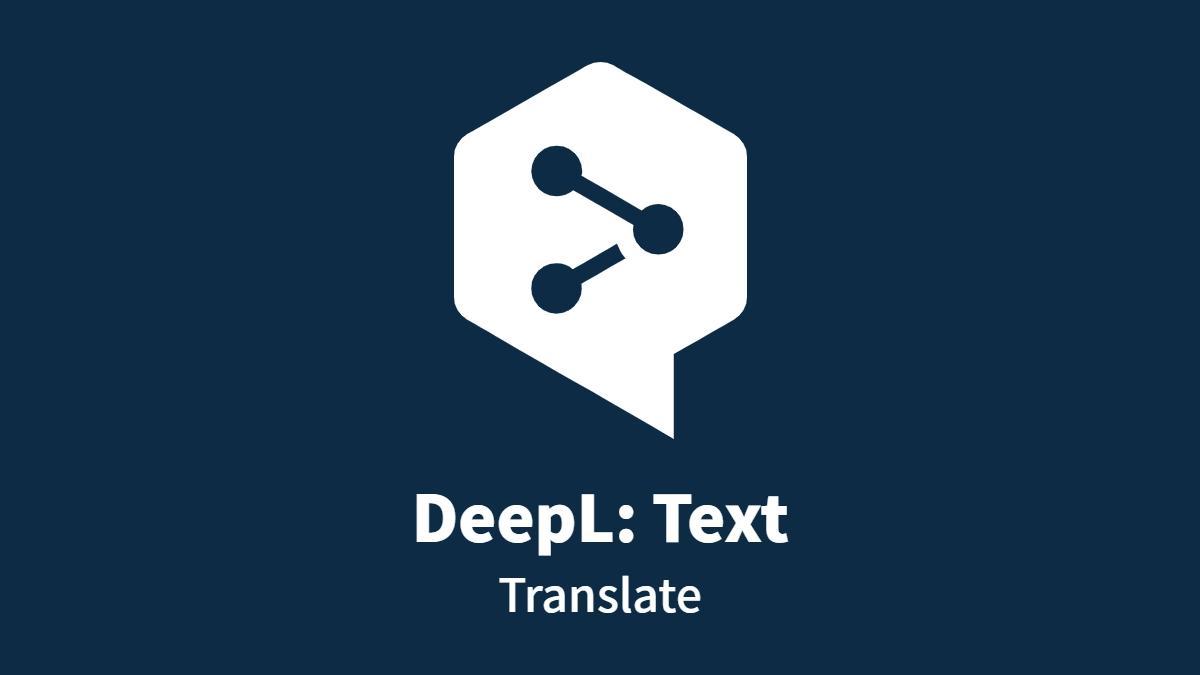
DeepL’s free tier is a most accurate translator for European languages, with AI-driven translations that flow naturally, especially for formal texts. It supports document translation with clean formatting, but its language range is smaller. I rely on it for academic work, though its character limits can be a hassle. It’s a top pick for precise, natural translations.
Pros:
High accuracy: Excels in natural, nuanced translations.
Document support: Preserves formatting in PDFs, Word.
User-friendly: Simple interface.
Cons:
Fewer languages: Only ~31 languages.
Character limits: Restricts free usage.
DeepL’s my go-to most accurate translator for academic or pro documents, but its character limits can be a pain for longer texts.
4. Microsoft Translator: Business-Friendly
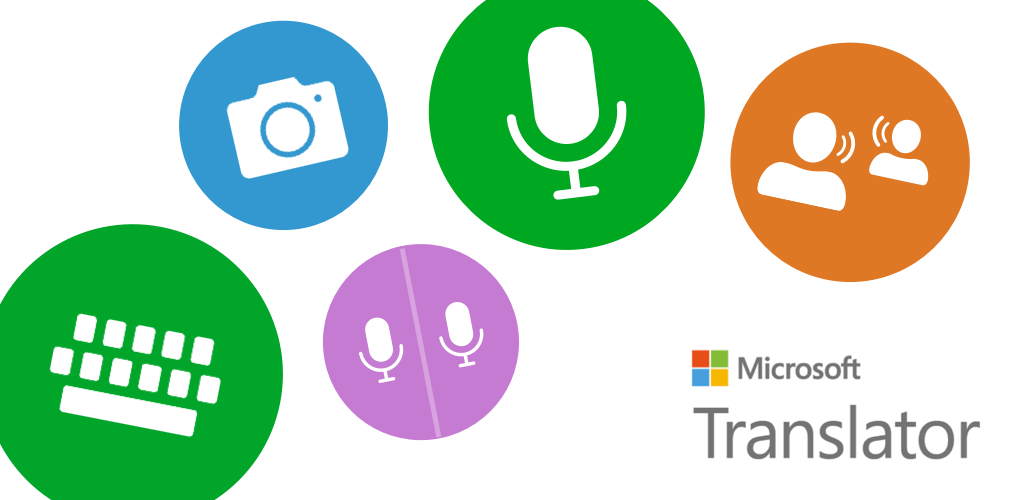
Microsoft Translator’s a translation tool and a most accurate translator in some cases, with 70+ languages and tight integration with Office and Teams. It’s great for business users needing quick translations or pronunciation help. I’ve used it for reports, but it struggles with idioms. It’s a solid free option for Microsoft ecosystems.
Pros:
Solid language support: Covers 70+ languages.
Text-to-speech: Great for pronunciation.
Free to use: No cost for all features.
Cons:
Spotty accuracy: Struggles with idioms.
Limited features: Lacks deep dialect support.
I’ve used Microsoft Translator as a most accurate translator for business reports in Word or PowerPoint, it’s handy but not perfect for complex texts.
5. Yandex Translate: Eastern Language Star
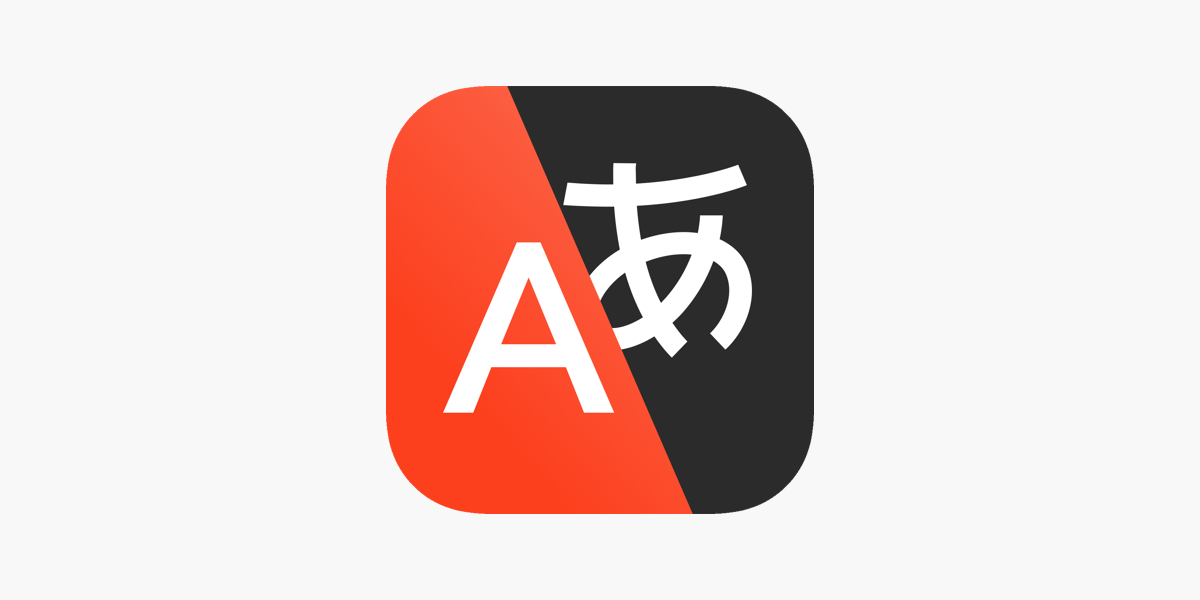
Yandex Translate supports 90+ languages and offline mode, making it a most accurate translator for Eastern languages like Russian or Ukrainian. It’s great for product descriptions or travel content, but accuracy varies outside its strong suits. I’ve found it reliable for specific language pairs. It’s a free tool worth checking out.
Pros:
Offline mode: Works without Wi-Fi.
Broad language support: Covers 90+ languages.
Free to use: No cost for basics.
Cons:
Inconsistent accuracy: Varies by language pair.
Basic interface: Less polished.
Yandex shined as a most accurate translator when I tested Russian-to-English product texts, but it’s hit-or-miss for other languages.
6. Reverso: Context-Aware Learning
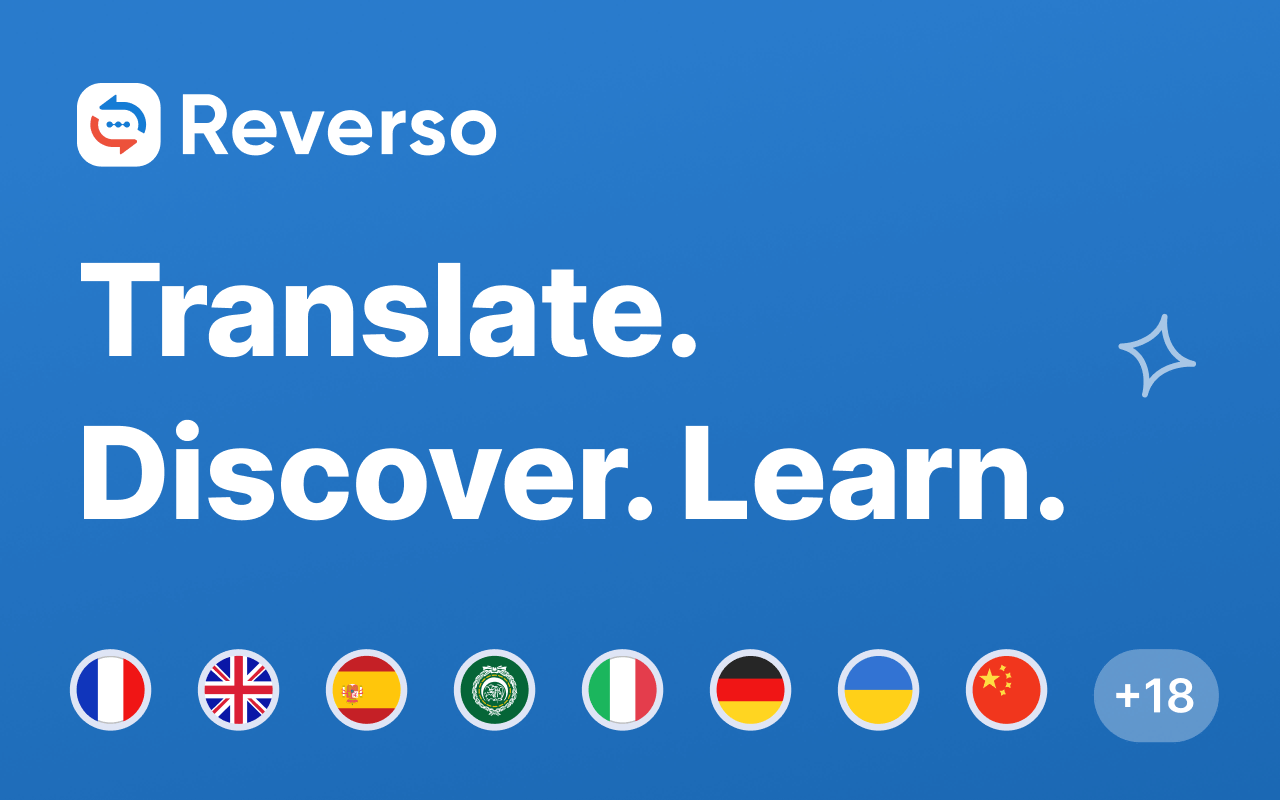
Reverso’s a most accurate translator with context examples and grammar tools, fully free for basic use, perfect for language learners. It shows real-world usage, helping you nail natural phrases. I’ve used it to learn French, but its limited language range holds it back. It’s a great pick for studying.
Pros:
Context examples: Shows real-world usage.
Learning tools: Grammar and conjugation aids.
Browser integration: Works on Chrome, Edge.
Cons:
Limited languages: Only ~20 languages.
No offline mode: Needs internet.
Reverso’s a most accurate translator for learning French phrases, it’s super helpful for picking up natural expressions.
7. Linguee: Dictionary-Style Precision

Linguee’s a most accurate translator for learners, pairing translations with real-text examples, fully free. It’s ideal for finding the perfect word or phrase, especially for writing. I use it for articles, but it’s not great for bulk translations. It’s a solid tool for precise wording.
Pros:
Example-based: Shows real-world contexts.
Free to use: No cost for basics.
Learning-friendly: Great for students.
Cons:
Limited scope: Better for phrases.
No offline mode: Needs internet.
Linguee’s a most accurate translator for choosing the right synonym in articles or emails, but it’s not great for bulk translations.
Comparison Table: Translation Tools
| Tool | Languages | OCR/Image | Website Translation | Best For | My Use Case |
|---|---|---|---|---|---|
| AnyDoc | 100+ | Yes | Yes | All-purpose | Websites, docs, subtitles |
| Google Translate | 100+ | Yes | Yes | Everyday use | Quick phone checks |
| DeepL Free | 30+ | No | Yes | Academic/pro texts | Formal docs |
| Microsoft Translator | 70+ | Yes | Yes | Business users | Reports |
| Yandex Translate | 90+ | Yes | Yes | Russian/Eastern langs | Product texts |
| Reverso | 20+ | No | No | Language learning | French phrases |
| Linguee | 25+ | No | Limited | Word/phrase choice | Articles/emails |
Why AnyDoc Is Still the Best
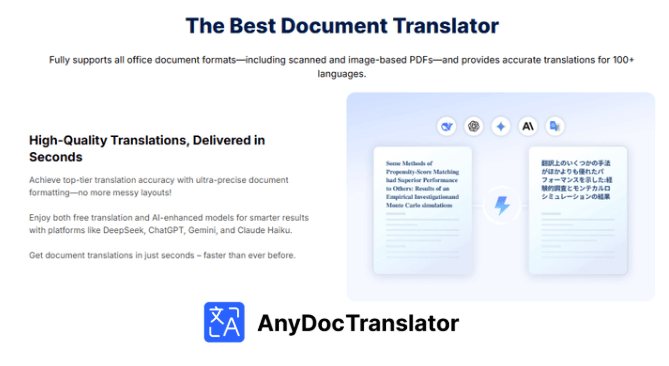
AnyDoc’s a most accurate translator with an all-in-one approach, documents, subtitles, OCR, and more. Its AI delivers higher accuracy than free tools, handling context and formatting like a champ. It saves layouts for PDFs and subtitles, unlike others that mess things up. Whenever I needed both accuracy and formatting, AnyDoc was the only most accurate translator that didn’t let me down, making it my go-to for pro-level work.
How to Use AnyDoc Translation Tool
AnyDoc makes translating websites, documents, and more so dang easy, it’s like having a buddy who speaks every language. Here’s how to get rolling with this translation tool, a most accurate translator, to tackle any task like a pro.
Step 1: Go to the AnyDoc Website
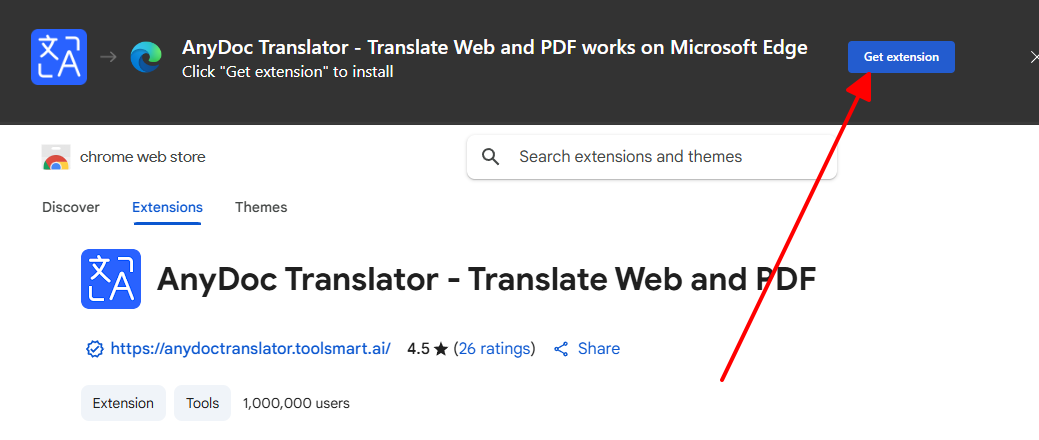
Head to AnyDoc’s website or the Chrome Web Store/Edge Addons page. Download the extension or app and sign up for the free trial, it takes like two seconds. Pin the extension to your toolbar for quick access.
Step 2: Upload Your File
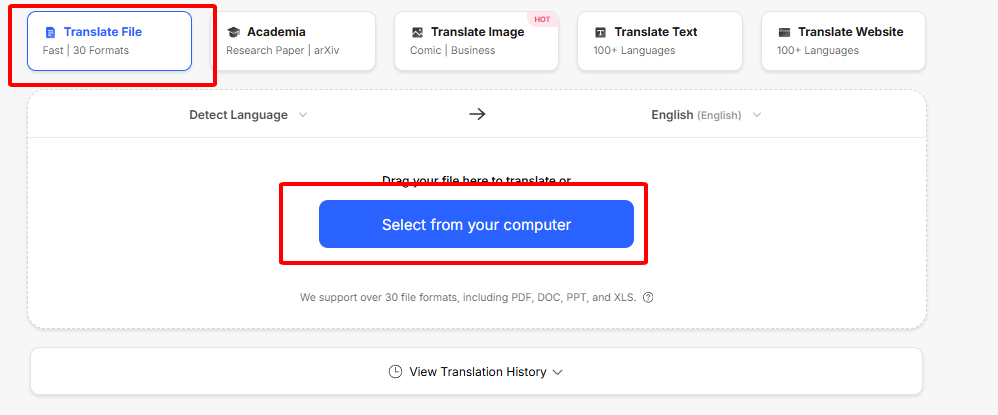
Upload a DOCX, PDF, SRT, or other file via the AnyDoc app. Select the file from your device and confirm it’s ready to translate. It’s super straightforward.
Step 3: Choose Source & Target Language
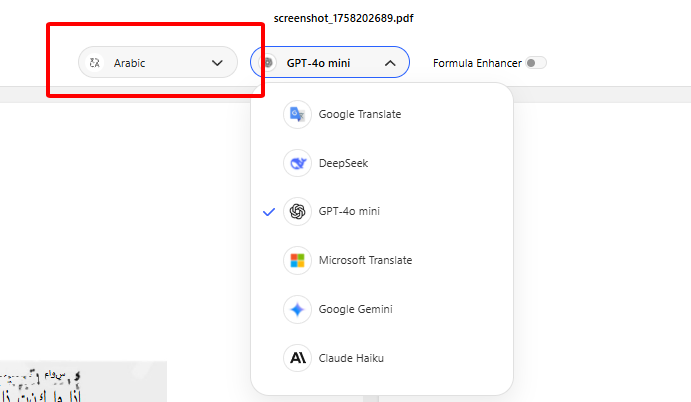
Pick the source language (or let AnyDoc auto-detect). Choose your target language, like English or Arabic, and hit “Translate” to start the process.
Step 4: Let AI Translate
Let AnyDoc’s AI work its magic, processing the file while keeping the layout intact for pro-level results. Review the translation to ensure it’s spot-on.
Step 5: Edit If Needed
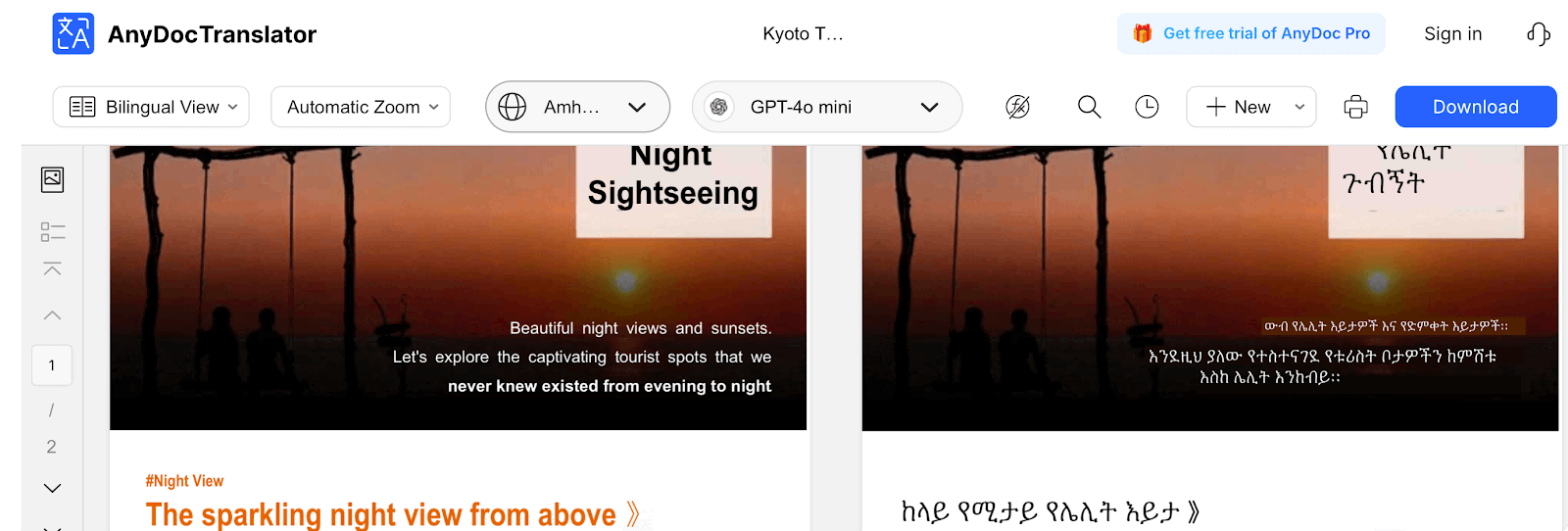
Use the built-in editor to tweak phrases or fix minor errors if you want. Save your changes for a polished result.
Step 6: Export and Download
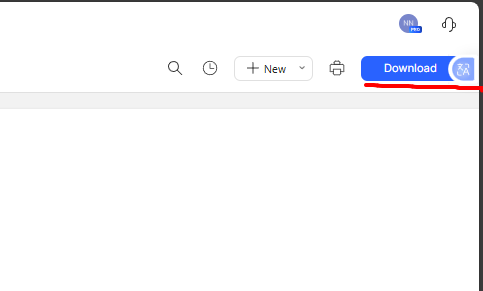
Export the translated file in the same format, DOCX, PDF, or SRT. Download it to your device or save it as a PDF for easy sharing.
FAQs
Q: Are free translators as accurate as paid ones?
A: Free tools like Google Translate are decent for basic use, but AnyDoc, a most accurate translator, handles complex grammar and formatting better.
Q: Which free translator is best for long documents?
A: DeepL Free’s great but has character limits. AnyDoc’s a most accurate translator for full documents without restrictions.
Q: Can free translators handle subtitles?
A: Not directly, you’d need to copy-paste. AnyDoc, a most accurate translator, supports SRT and VTT natively.
Q: Which free translator is best for learners?
A: Reverso and Linguee shine with real-world examples, but AnyDoc’s bilingual display makes it a most accurate translator for learning.
Summary
Free translation tools like Google Translate are fast, DeepL’s natural for European languages, and Reverso’s great for learners, but they’ve got limits, fewer languages, no offline mode, or messy formatting. From my experience, if you need a most accurate translator with accuracy and support for documents, subtitles, and websites, AnyDoc’s the top dog. Try free tools for casual use, but rely on AnyDoc’s free trial when precision matters.

